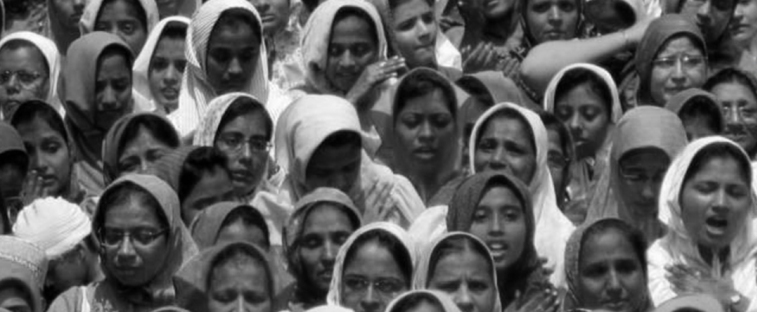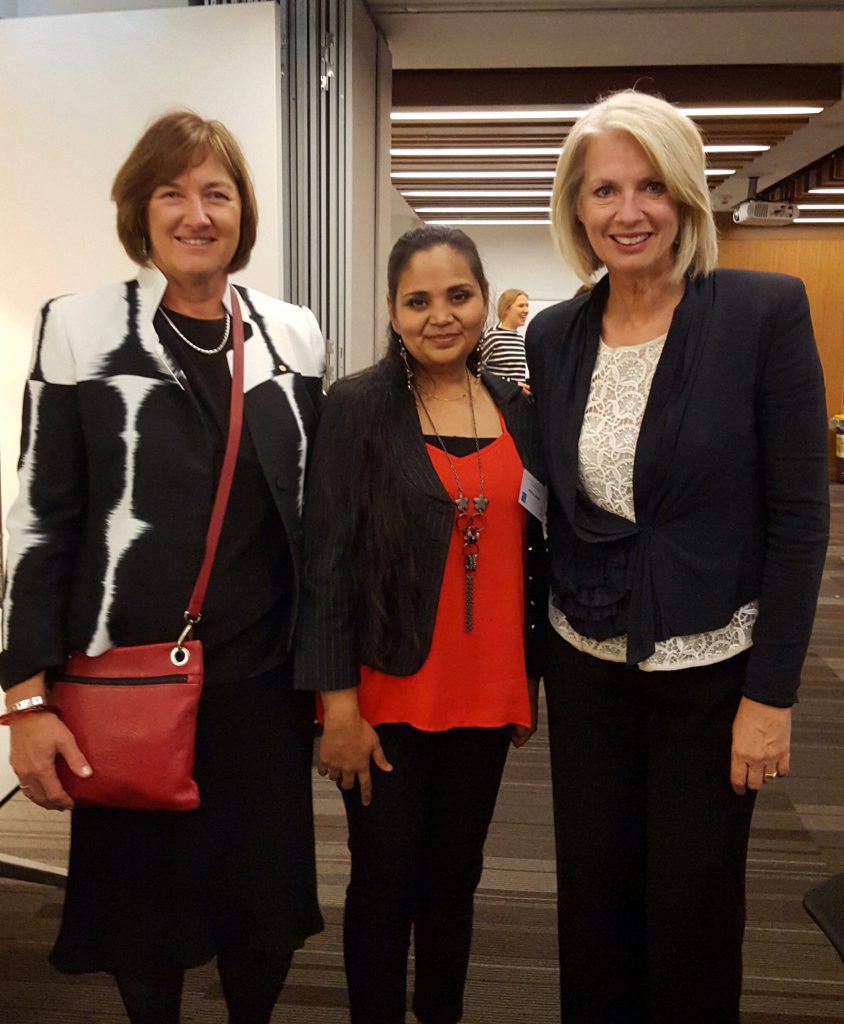‘Far from enhancing my marital bliss, khatna had all but devastated it’

by: Anonymous Age: 30 Country: United States I first learned that khatna had been performed on me when I was 11 years old. My mother told me, and even then the hair on my neck rose and I had a clear instinct that what had happened wasn’t right. I asked my mother why Bohra girls were cut when there was no evidence that it had the same benefits as male circumcision. She responded with the familiar refrain: hygiene, marital bliss. At that time, I had no idea what a clitoris was supposed to look like. My mother described it to me, never using that word, but saying that it was a “long thread of flesh” that hung out of the vaginal hood. It had to be cut because it would otherwise rub constantly against my underwear. For the Potterheads out there, the image that sprang to my mind was of an Extendable Ear in my panties, a long flesh-colored string that had to be snipped to curb continuous arousal. I had never seen a picture of a clitoris, nor could I. I’d grown up in a country where the Internet was heavily censored and the chapter on reproduction was ripped out of our Biology textbooks. That image of the clitoris as a long flesh-colored string stayed with me until I looked at cartoon pornography as a teenager in the United States. But let me be clear, because this detail about my education is a gateway to Orientalism: I had an excellent primary education, and I was far better prepared for graduate school than many of my US-educated peers. The fact that schools in that region refused to include human reproduction in the curriculum was shortsighted and foolish, but not unlike the abstinence-only curriculum I’ve learned about since moving to the US. But let me return to that moment my mother told me I’d been cut: since it never crossed my mind that I would or could be sexually active before marriage, I only thought about khatna once or twice a year until I was married. And that’s when I realized that sexual intercourse was extraordinarily difficult for me. My vagina would convulse, and even the thought of using a tampon triggered these convulsions. My condition went undiagnosed until years later when my OB/GYN attempted to do a pelvic exam. She had no warning because I did not tell her about my difficulty with intercourse. Peering over the stirrups, she apologized for causing me pain, and asked me to breathe deeply while apologizing rapidly: “Just one finger, I’m sorry I’m sorry I’m so sorry almost done almost done, and relax.” I learned that I had vaginismus, and needed physical therapy. As I talked through my condition with my wonderful doctor, I learned that an early childhood trauma was likely the cause for my vaginismus. The symptoms pointed towards a psychological trigger rather than physical limitations, and the more I reflected on my condition the clearer it became that I had always been unable to tolerate even the idea of penetration from around the age khatna had happened to me. Any kind of insertion seemed laughable to me as a teenager, whether I was washing myself in the shower or attempting to masturbate. This points to the idea that women who don’t consider themselves victims – and I certainly didn’t and don’t – can experience long-term effects of khatna that we may not even (or ever) be aware of. When I eventually saw a picture of a healthy and anatomically accurate clitoris for the first time, what I’d already suspected was confirmed: there was no hygiene-related reason to snip it, and far from enhancing my “marital bliss” it had all but devastated it. But learning about khatna revealed something about me to myself: even as a child, I recognized the value of empirical research when it came to making decisions about altering bodies – particularly female bodies, which have historically always been more vulnerable. Even as an 11-year-old, I knew the benefits of male circumcision – I had just learned about trench warfare during World War II, and the infections that raged among uncircumcised men living in those filthy conditions. And as I reflect on that moment when I was 11, it makes perfect sense to me that I chose a career in research. Another thing I recognized is that not only is the term “victim” disempowering when referring to women who have experienced khatna, but also entirely inaccurate. Activists have argued against the term “victim” for decades, particularly when it comes to describing women and gender-queer survivors of physical abuse. However, the term is misleading too. It is an easy label assigned by the status quo, and a particularly effective way for those in power to demonstrate their investment in “women’s issues.” It is a gateway to continued imperialism, where the narratives of marginalized groups are stripped of nuance, or hidden entirely. It has been incredibly easy, even comforting, to vilify Dr. Jumana Nagarwala for performing khatna in the US. But let us not buy into the clash-of-civilizations narrative. Each time a US news outlet says the practice will not be “tolerated in the US,” there is an implied comparison to those “backward” countries that tacitly endorse it. Additionally, it implies a wounded nationalism, where (White, male) individuals are almost more outraged that it is happening in the United States than that it is happening at all. And so we are forced to view the practice through an imperial lens. We must not let khatna become a political talking point for US politicians to show how they have “zero tolerance” for “brutal” practices while forwarding a facile concern for women’s rights. We must not forget that khatna is endorsed by the largely male leadership of the Bohra jamaat. While Dr. Nagarwala is culpable, and there is no question that she must face legal action, she has been turned into a scapegoat by both US discourse and the Dawoodi Bohra leadership.
‘I want Bohras to wake up and stop practicing Khatna’

By: Anonymous Age: 32 Country of current residence: Bahrai I’m a victim of FGM and this is my story. It’s the same as every other FGM survivor. India. A dingy house. An old woman. A blade. Pain. Blood. Being given chocolate. And then being yelled at to stop crying. And the thing that hardly anyone talks about is how ANGRY it makes you and how you can’t find ways to release the anger. It’s been 25 years and I’m still so, SO angry. Why was a piece of me cut off for an unnecessary reason? Why was psychological trauma inflicted on me at such a young age? Why am I suffering from horrible period pain every month just because my mother blindly followed what was expected of her to do? Why do I have to feel the pain of seeing the guilt and shame on my mother’s face now whenever this topic is raised because she hates herself for what she did? And why is it STILL being done to little girls who don’t have the power to stop it? It makes me mad, mad, MAD! And this always makes me wonder how others follow this religious leader or even stay in this community. Why don’t more Bohras question the teachings? Why don’t they protest? Does the dream of heaven make them so blind that they approve of abuse on young girls? I’m so, SO happy to see FGM get media traction and be publicized for the world to see. I want to see FGM STOP. Let the leader declare that khatna needs to be stopped so the Bohras who follow his every command will stop mutilating their daughters. I want Bohras to realize they CAN decide for themselves what is right and wrong. Cutting off a part of girl children’s genitals without their consent, for no medical reason, is completely, and unequivocally wrong.
Sahiyo welcomes the new WHO guidelines to improve care for millions living with female genital cutting

The new World Health Organisation guidelines released at the Women Deliver conference, 2016, in Copenhagen is a huge win for Female Genital Mutilation/Cutting activists worldwide. Sahiyo is cheering on too! The guidelines, while defining the practice of various types of FGC, has finally put Asia and Middle East on the map of areas affected along with Africa. As the guidelines state: ‘International migration has now made the practice, prevalent in 30 countries in Africa and in a few countries in Asia and the Middle East, a global health issue.’ Stressing on the need for health care, the guidelines aim to empower health workers acknowledging the crucial role they play, while also acknowledging the gap between health workers’ training and the knowledge of how to tackle the health complications of FGC. As the report states, “Access to the right information and good training can help prevent new cases and ensure that the millions of women who have undergone FGM get the help they need.” Another great aspect touched upon by the guidelines is so called “medicalization” of the practice of FGC – parents asking medical doctors to perform genital cutting because they think it will be less harmful. This is a phenomenon that we, at Sahiyo, have often observed among those who seek to justify Khatna. Several Bohras, particularly in urban spaces, now approach gynaecologists or other doctors within the community to have their daughters cut, and as the WHO guidelines point out, getting healthcare workers to stop participating in this practice is a big challenge. The guidelines have highlighted the need for evidence-based practice and creation of protocols and manuals including ‘what to do when faced with requests from parents or family members to perform FGM on girls’. Some of the focus areas in the report include: Mental health including cognitive behavioral therapy and psychological support to treat depression and anxiety disorders Female sexual health covering sexual counselling to prevent or treat female sexual dysfunction Information and education for all women and girls who have undergone female genital mutilation, and health education and information on de-infibulation, where appropriate, for both health-care providers and for women and girls In conclusion, this is a great set of guidelines incorporating Asia and Middle East and incisively addressing pseudo-scientific practices that often come in the way of dealing with problems that may arise from FGC. It is also significant that the guidelines make a specific mention on the effect of FGC on mental health, since that is a ground much need to be covered by FGC activists and counselors, and is particularly relevant in the context of khatna as practiced by the Bohras. Read the full WHO report here.
’Everyone’s business’: Representing Dawoodi Bohras at the No FGM Australia panel discussion in Sydney

by Mubina Jamdar Female Genital Mutilation is child abuse and a form of gender-based violence in the name of religion: This was the clear message that emerged from the panel discussion held at The Australian Human Rights Commission office in Sydney on April 29, 2016. The event, hosted by No FGM Australia, was titled “FGM is Everyone’s Business”, and I had the honour of speaking on the panel on the subject of khatna (female circumcision) in the Dawoodi Bohra community. FGM is illegal in many countries around the world, including Australia. In November 2015, in one of the first convictions under Australia’s anti-FGM law, three Dawoodi Bohras were held guilty of circumcising two minor girls. Since the Bohra community predominantly comes from India, it is time for India to ban this practice and protect young girls from this barbaric practice. At the Sydney event, speakers included internationally-renowned Professor Gillian Triggs, president of the Australian Human Rights Commission, Felicity Gerry QC, international expert in FGM law, and other FGM experts including researchers, health professionals, educators, law enforcement agency and social workers. Here is a summary of key points that the panel raised: FGM, depending on the severity of the cutting, can lead to many serious health issues, even death. It causes lifelong psychological scars and for some, it leads to serious mental health issues. It’s easy to stop the practice in the family if the man takes a firm stand. Women often find it difficult to convince in-laws. Therefore, educating men is equally important. No Islamic scholar has cited any Quranic injunction advising female genital cutting. It’s a cultural practice that existed long before Islam. FGM is an issue of child abuse and child protection. For that reason, this should be made illegal under the same provisions. Australia has a large population from African countries, Malaysia, Indonesia, Egypt, middle eastern countries and many other countries where FGM is prevalent. Education is the key, at the school level and in the affected community. Spiritual leaders around the world need to give a joint statement to stop the practice. FGM is everyone’s business. My speech was aimed at educators, community workers and law enforcement agencies. I gave them insights into the community culture to help design future educational programs. I suggested the need to emphasize in education programs that FGM is not a teaching of the Quran or the Prophet, Rasulullah. Since this community is tightly controlled by the clergy and its head office in Mumbai, it is not sufficient to educate community members. Amils (Priests) should be held responsible by law to discourage community members from practicing FGM. They must report incidents of FGM to the police. How can you help? Please sign the petition to make FGM illegal in India, addressed to the Minister of Women and Child Welfare. It was launched by “Speak out on FGM” on Change.org:https://www.change.org/p/end-female-genital-mutilation-in-india [Photo courtesy: No FGM Australia]
